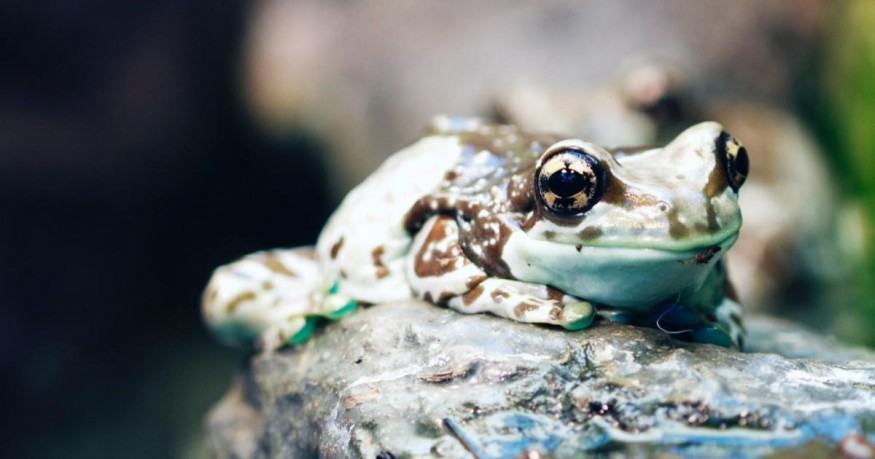
A carnivorous and alien spotted-thighed frog has been wreaking havoc on the indigenous biodiversity of southern Australia with its indiscriminate feeding, according to the University of South Australia (UniSA) researchers in a new study, they published in the Australian Journal of Zoology.
The culprit is an amphibian known as the spotted-thighed frog (Litoria cyclorhyncha), which hitchhiked from Western Australia and established a community of more than a thousand individuals in Streaky Bay, South Australia. Confirmed sightings have also been reported from Adelaide airport and the Eyre Peninsula.
This study is the first to document the animal's diet in the area it invaded, which provides important information on the effect that alien species have on ecosystems.
Christine Taylor and Gunnar Keppel, ecology experts from UniSA, say that if the animal spreads to other areas in Australia, this could be a cause for concern due to the frog's destructive eating habits. Taylor says that it devours virtually anything it can eat and adds that the predatory and relatively large tree frog impacts the ecosystem by eating local species. This, in turn, displaces and destroys the local food web. It also outcompetes the native vertebrates for resources, potentially changing the landscape of natural biodiversity in the invaded area.
The study focused on the stomach contents of a sample of 76 frogs in three habitats: an urban area, a human-made wetland, and semi-natural bushland. The researchers discovered an average of six prey items in the frogs' stomachs, which include a staggering 200 species of prey animals. Sixty percent of these were insects such as beetles as well as spiders. The researchers also found mice, native geckos, and young frogs.
Introduced species are usually destructive. A perfect example is the cane toad, which was introduced during the 1930s for controlling sugar cane beetles continues to destroy the ecology of Australia today. It is now classified as a threatening pest in Australia's Environment Protection and Biodiversity Conservation Act.
Keppel says that the public should understand the harmful effects of introduced species on the environment. He says that if the spotted-thighed frog cannot be controlled, it can dominate a lot of ecosystems in the southeast Australia area, to the detriment of local species.
Keppel says that the frog is quite mobile, traveling over 2,000 kilometers to Streaky Bay. With its tolerance to salinity and high temperatures, it can spread even further eastward up to the Murray-Darling Basin.
He adds that it is vital to maintain the protection of the biodiversity of the country. He considers the prevention of the further spread of the spotted-thighed frog to be a high priority for conservation.
He says that the state must consider the management of the invasive frog populations at the Streaky Bay area. Such measures must include information and education programs that inform the people on what they should do when they find these frogs. The government should also study if it were feasible to exterminate the frog's population in South Australia.
Finally, Keppel says that it is important not to disturb these creatures if people see them in their travels, to avoid spreading the frogs any further via hitchhiking.
© 2025 NatureWorldNews.com All rights reserved. Do not reproduce without permission.





